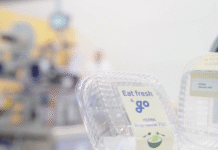
Concern over sugar intake and interest in sugar reduction is driving an increasingly sophisticated approach to sweetening food and beverages with a focus on three parallel areas – natural sweeteners, less sweetening, and no sweetness.
Innova Market Insights’ latest Ingredient Insider report analyzes trends in sugar reduction and the use of sweeteners in food and beverages. The report includes market and consumer research, new product activity, and the use of sugar-related claims in food and beverages.
Efforts to reduce sugar levels are well established and ongoing, reflecting the well-documented link to dental caries as well as the widely held view that high sugar consumption is a causative factor for a range of conditions including weight gain, diabetes, and hyperactivity in children. Government intervention in this regard has become more widespread globally, including the use of sugar taxes and the regulation of advertising targeting children.
Four in ten consumers in Innova’s global Health and Nutrition Survey in 2020 claimed to have decreased their sugar consumption over a 12-month period. The prevention of health conditions was the leading reason given for this reduction, ahead of weight management and followed by dental health.
“In recent years ingredient innovations have enabled manufacturers to better replicate the multiple sensory and functional properties of sugar, including sweetness, mouthfeel, bulk, browning, and moisture retention while lowering the amounts of sugar and calories,” reports Lu Ann Williams, Global Insights director at Innova Market Insights.
Sweeteners currently include non-nutritive, bulk, reduced-calorie sugars, and rare sugars, but ongoing research is likely to discover forms of sugar that can be marketed as natural and offer both formulation and metabolic benefits, while increasingly successfully targeting the high taste expectations of consumers.
As well as NPD activity in sweet ingredients, such as fruits to provide sweetness that does not count towards added sugar on labels, the demand for natural sweeteners like stevia, monk fruit, and erythritol is rising in response to consumer demand for clean products and a clean label. These are starting to displace other sweeteners considered to be artificial, reflecting Innova Market Insights’ Top Trend for 2021, “Transparency Triumphs.” Companies are upping their game to tell the story of their product by detailing exact ingredients and origins along with production processes.
Manufacturers are continuing to develop new steviol rebaudioside glycosides with sweetness profiles that better match the taste of sugar. At the same time, new production methods are reducing environmental impact. Blends of ingredients used to replicate the sensory and functional properties of sugar include plant-derived sweet-tasting fibers such as chicory root fiber.
These ingredient mixes will continue to optimize taste, recognizing its vital role as a purchase driver. These can encompass concentrated sweeteners alone, or in combination with fibers and other components that replicate the sensory and functional properties of sugar. Ingredients can be chosen and tailored to match the dietary requirements of consumers, including plant-based, vegan, and gluten-free. They are also likely to offer benefits beyond sweetness, such as better-tolerated fibers and protein fortification.
IndiFoodBev — authentic, impactful and influential
An English-language food and beverage processing and packaging industry B2B platform in print and web, IndiFoodBev is in its third year of publication. It is said that the Indian food and beverage industries represent approximately US$ 900 billion in revenues which implies more than 20% of the country’s GDP. Eliminating the wastage on the farmside can help to deliver more protein to a higher number of the population apart from generating sizable exports. The savings in soil, seeds, water, fertilizer, energy and ultimately food and nutrition could be the most immense contribution that country is poised to make to the moderation of climate change.
To improve your marketing and grow sales to the food and beverage processing and packaging industry, talk to us. Our research and consulting company IppStar [www.ippstar.org] can assess your potential and addressable markets in light of the competition. We can discuss marketing, communication, and sales strategies for market entry and growth.
Suppliers and service providers with a strategy and budget for targeted marketing can discuss using our hybrid print, web, video, and social media channels to create brand recognition linked to market relevance. Our technical writers are ready to meet you and your customers for content.
The second largest producer of fruit and vegetables in the world is continuously expanding processing capacities and delivery systems with appropriate innovative technologies. We cover product and consumer trends, nutrition, processing, research, equipment and packaging from farm to thali. Get our 2025 media kit and recalibrate your role in this dynamic market. Enhance your visibility and relevance to existing markets and turn potential customers into conversations. Ask for a sample copy of our bi-monthly in print or our weekly IndiFoodBev eZine each Wednesday.
For editorial info@ippgroup.in — for advertisement ads1@ippgroup.in and for subscriptions subscription@ippgroup.in
Naresh Khanna – 10 February 2025
Subscribe Now










